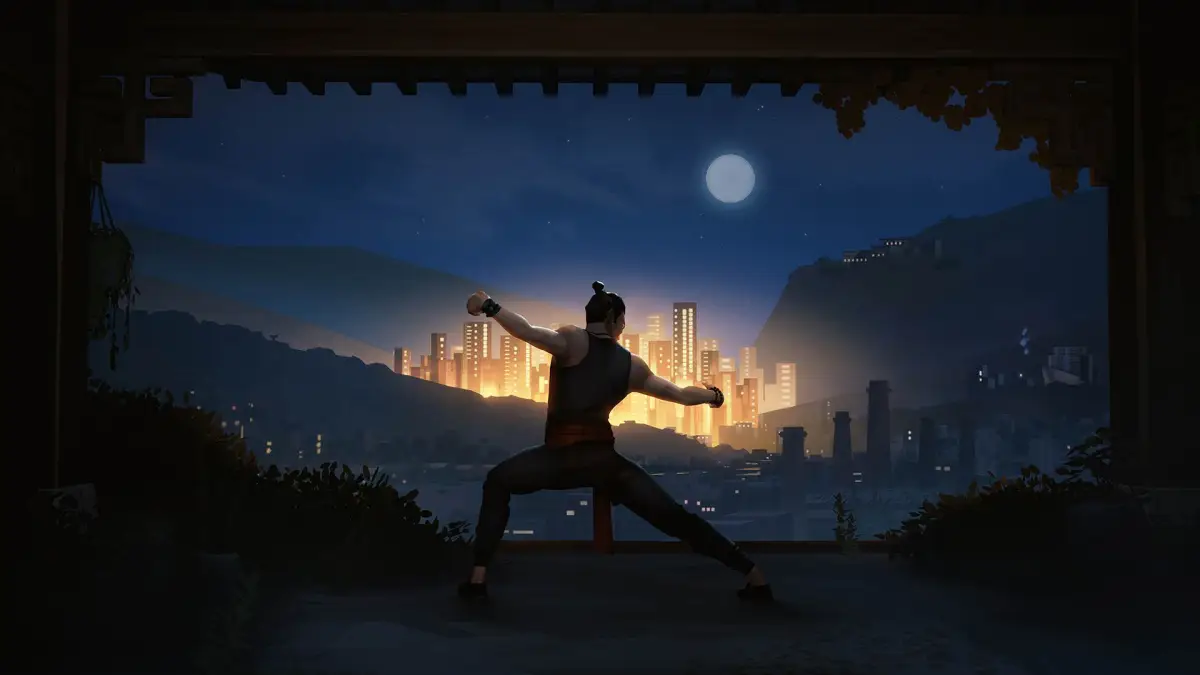Improving with age
Vengeance is at the core of Sifu. Behind the style, the music, the action and the fists, Sifu is a story of revenge. It is a climb up a mountain, as you climb higher and get kicked back down. Finishing Sifu means not just mastering its systems, but becoming so attuned with them that you stop thinking so darn much. The reward, thankfully, is worth it.
Sifu is the story of a young student, who sees their master cut down by a gang of five intruders before them. After training for years, the student embarks on a simple quest: cross five names off a list, and avenge your master. Each boss has their own level, themed and built around them, and filled with dozens upon dozens of goons to beat up.
Sifu (PC [reviewed], PS4, PS5)
Developer: Sloclap
Publisher: Sloclap
Released: February 8, 2022
MSRP: $39.99
Developer Sloclap has already tackled the 3D martial arts brawler to some success with its previous game, Absolver. But where Absolver was a fantasy world of deck-building brawling, Sifu is focused; the move set is light and strong strikes, dodging, and parrying. Different combinations open up, but this isn’t the complex stance system.
The difficulty comes in just how easily you can die. It is so, so easy to get surrounded and suffer an unstoppable onslaught of fists and feet until you perish. Luckily, you have more than just martial arts on your side. Your family’s medallion allows you to recover and get back up, at the cost of time. Every time the student falls, they can get back up by foregoing years of their life.
It starts out easy enough: die at 20, your death counter goes up to one, and you rise at age 21. The next fall will up your death counter, and thus add more years to your penance. Soon, you’re not losing a year on each recovery, but five or six. And you hurtle ever closer towards your 70s, the decade at which you will stop getting back up.
To put it bluntly, Sifu is difficult. It’s one of the harder games I’ve played in recent memory, and it demands a lot of you. Part of that difficulty is in the moment-to-moment fighting. Managing a crowd of enemies can be tough, especially when they start to use deadly weapons and switch up attacks, going for sweeps and hitting with such strength that your strikes won’t stagger them.

Its difficulty is also inherent to its systems. Deaths rack up exponentially, and your age and death count carry over level-to-level. Even if you surpass one area just barely, you’re now going into the next with a high age and death count, with maybe one or two lives to spare. And while your damage goes up as you age, your health goes down. Thankfully, Sloclap lets you set “best clears” of a sort to return to; going back to a level, you can start at the lowest age you reached it at, rather than completely starting over.
Clearing Sifu, at its core, means overcoming those barriers and getting better, faster, and moving forward younger. It feels like a constant uphill battle, like Sisyphus fighting through the hall in Oldboy. While playing it, I wondered how many people would see the end of this game, even the final boss of it. I wondered if I would ever see it.
The good news is, if that’s something you’re willing to take on, Sifu can also be intensely rewarding. Mastering the moves is one thing, but learning the right mentality for Sifu pays off in amazing ways. Rooms that once intimidated me with the number of bad guys, wielding weapons and different move sets that I’d have to keep in mind, became puzzles that I dissected with ease. There are moments where the game seems to slow down, and you realize it’s just you getting better. Sifu facilitates these moments incredibly well. The faster clears become a point of pride, as you cheerfully boast about reaching the third stage while still in your 20’s.

Average rank-and-file enemies are one thing, and Sifu also has a wealth of mini-bosses and optional fights that help open up more of the world. There’s a bit of exploration and discovery to do alongside the brawling, allowing you to open up shortcuts to move through the level faster. These don’t just feel like rewards for good observation and exploration, but end up feeling like interesting choices too.
I could either fast-track my way through a level, trying to clear it at a younger age; or I could spend more time in it, beating up more enemies and banking some precious XP to spend on moves. Buy a move once, and it will be in your arsenal for that run. Over time, though, you can keep purchasing it, eventually permanently adding it to your skillset. Those additions were crucial to making progress and overcoming tougher enemies, but also felt like interesting choices to make in terms of what I prioritized. A fancy Focus move might be good, to spend some of that special meter, but so would being able to kick chairs at guards to take their feet out.
It all culminates in the boss fights. Good lord, the boss fights. The five targets of Sifu offer incredible match-ups, with a few being among my favorite boss fights of the last few years. Each one has their own move set and arena; each brings their own personality to the forefront, and has two-stage fights to overcome. These fighters have supernatural powers, and once the student has proven they are no idle threat, the targets will bring their full force to bear.
Each of those forms becomes its own problem to solve. For some, it simply speeds them up and adds more to their move set. For others, it’s a completely new form, with an entirely different style of fighting. The boss of the Museum level is an absolute highlight. It’s one moment I want everyone interested in this game to see.

Contributing to each fight, each area, and every bare-knuckle brawl is the style of Sifu. It clearly aims to follow in the footsteps of martial arts films, going for stylish angles with every takedown. Transitions between areas will move the camera to novel places, play with reality, and distort the world. Sifu is frequently surreal, building a world that’s seemingly magical. Several times it asks you to do something bizarre or strange to progress, only to then tumble further down the rabbit hole.
I do wish parts of Sifu were a bit clearer. Focus abilities can sometimes get a little finicky to target, and the camera had some trouble keeping up with the action in a few places. What happens in battles or with your stature isn’t always clear, and some aspects of its systems took hours before I realized what they did.
Crucially, it has one aspect—a “true” route of sorts—hidden behind a mechanic that isn’t explicitly spelled out, and I only discovered it by accident. It serves as the story finale, though the ending also felt like it didn’t really tie everything off well. Sifu‘s story provides a good backdrop for action, but didn’t stands on its own for me.
This “true” ending is behind extra, added challenge. That, alongside the general difficulty of making solid progress, might deter folks from playing through Sifu and seeing what it has to offer. It is intensely rewarding, but also demands a lot in order to see those rewards come to fruition. It took me about 20 hours to reach the summit, but they were some demanding hours.

I frankly don’t consider myself too much of a difficulty-chaser in games, but Sifu might have changed that. I had flutters of intense accomplishment when I beat a boss, just a few tries after thinking it would be impossible. I would lament that I wasn’t sure I’d be able to get to the finale, and then pump my fist in the air proudly as I managed to do so.
It’s a razor-thin wire to walk in making this feel rewarding. Too far on one side, and it’s masochistic; too far on the other, and it’s not enough of a challenge. Somehow, Sloclap strikes dead center. Sifu is a challenge worth taking on and overcoming. It’s a story of vengeance with a little heart at the end, and though it might not land perfectly, it’s got a lot of style and action to back it up.
Vengeance, as it turns out, is not always worth it. But if you like climbing a mountain of challenge, Sifu is.
[This review is based on a retail build of the game provided by the publisher.]





Published: Feb 13, 2022 02:00 pm